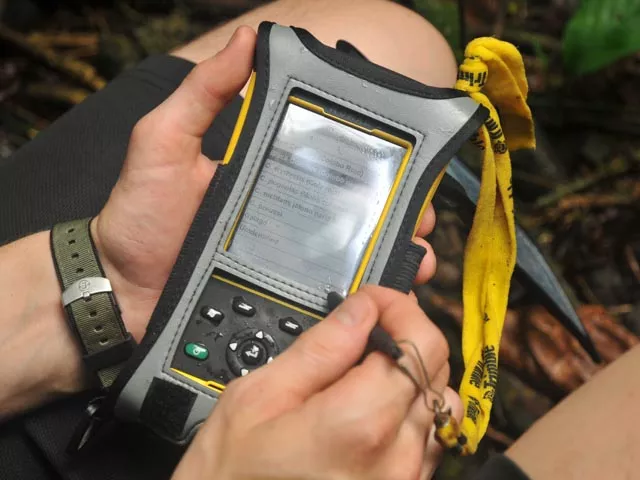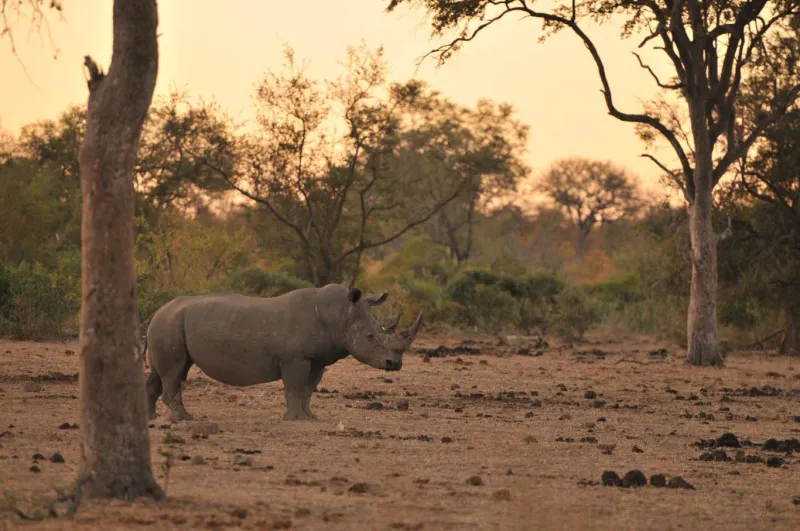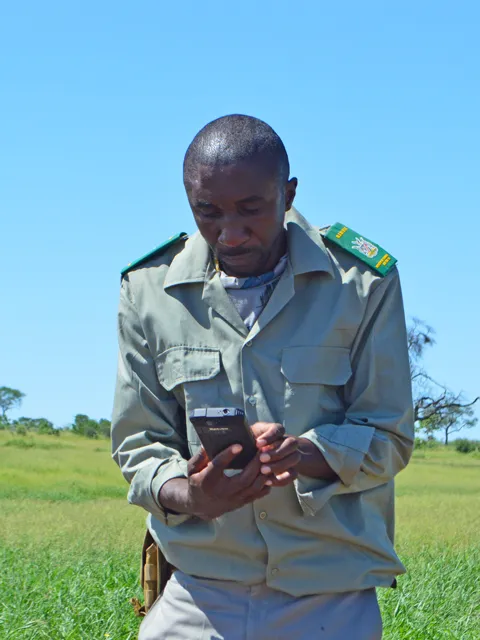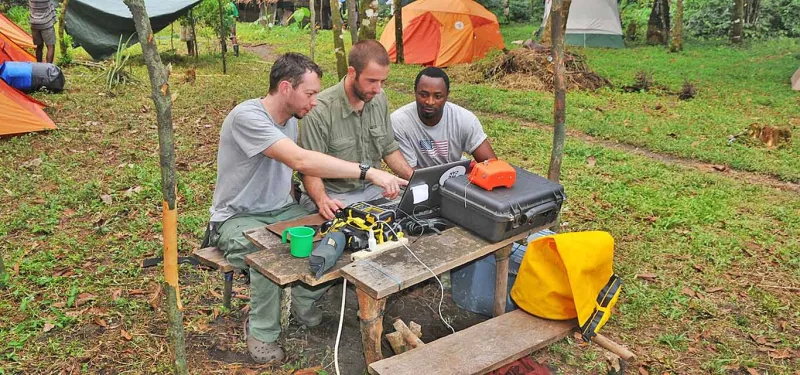Dr. Rich Bergl, Director of Conservation, Education, and Science for the North Carolina Zoo
My first field research experience was collecting behavioral data on forest monkeys in Kenya in East Africa. At that time (1995) once I got to the field site, there was no internet and international phone calls could only be made from a hotel a half-day journey away. All our data was collected in paper notebooks by hand. We didn’t even have GPS devices (which were about the size of a laptop back then). Even several years later when I was doing my PhD research on gorillas in West Africa (in Nigeria and Cameroon), email access was limited to internet cafes in big towns. Data collection was still on paper, and the one GPS unit I had was really expensive and not very accurate.

Things have really changed. Now even remote villages across the continent of Africa frequently have cell phone signal. Smartphones can be bought for less than $100 and have more power than the computers used to send astronauts to the moon. The availability of all these technologies is altering and improving how wildlife research and conservation is done.

Wildlife under threat
Unfortunately, another thing that is changing is the pressure on wildlife populations. Many people will be familiar with the threats facing wildlife species globally. Iconic species like elephants, rhinos and tigers have been targeted by a multi-billion dollar international trade in illegal wildlife parts that rivals the trade in narcotics and guns in its scale. Organized criminal gangs, and even terrorist groups, exploit the demand for wildlife products that has exploded along with the growth of economies in places like China and Vietnam. Poaching of wildlife, especially in Africa and Asia, has reached epidemic proportions and many species will not survive if we can’t properly protect them.
A new conservation tool
About ten years ago, several of my conservation colleagues and I realized we needed to do something different to help protect wildlife. It was widely recognized that protected areas like national parks were essential for conserving endangered species, but many of these areas weren’t really able to prevent poaching. Resources were limited and park staff often didn’t have the information they needed to plan and assess their conservation activities. Lots of different scientists, conservationists and organizations were trying to use technology to make things work better, but those efforts were disparate and uncoordinated.


In order to try and solve these problems the North Carolina Zoo partnered with some of the world’s leading conservation organizations (e.g., World Wildlife Fund, Wildlife Conservation Society) to create a new set of shared technology tools to better secure wildlife habitat and populations. We created the SMART partnership, which today consists of nine partner organizations1 with a single goal: making protected areas around the globe work better.
The main activity of the Partnership has been to develop a set of software and analysis tools collectively known as SMART (the Spatial Monitoring and Reporting Tool). SMART allows rangers working on the ground to use ruggedized smartphones to record data about what they encounter in the field, and track where their patrols go. Information on animals, illegal activities and conservation actions taken are recorded and then fed into a central database. This allows the data to be quickly analyzed, visualized, mapped and acted upon so that park managers can rapidly respond to threats. Transforming raw data into usable information helps managers allocate their time and resources more effectively and plan future activities for maximum impact.
Global Impact
SMART makes it easy for rangers to collect, store, communicate, and analyze conservation data even if they don’t have much technical training. As a result, SMART has become the global leader in protected area technology. SMART is now used at more than 800 sites across more than 60 countries around the world. As SMART is freely available to the entire conservation community it is possible for any interested organization to use its powerful set of tools. Through our leadership role in SMART, the Zoo is helping to save species from the arctic, to the jungles of Asia to the savannas of Africa.
The Zoo is involved with both developing the SMART software platform and implementing SMART-based conservation at sites across Africa. In our “At the front lines” posts, we will be sharing more about how the zoo is helping to protect endangered species in some of the most important parks on the African continent.

